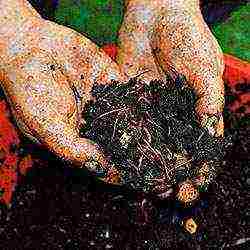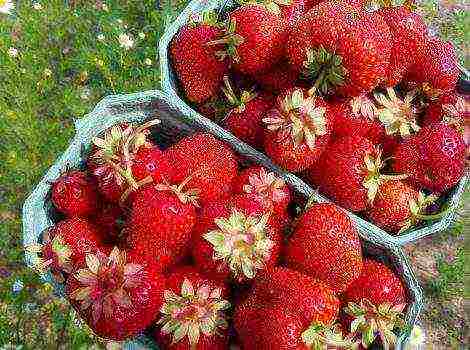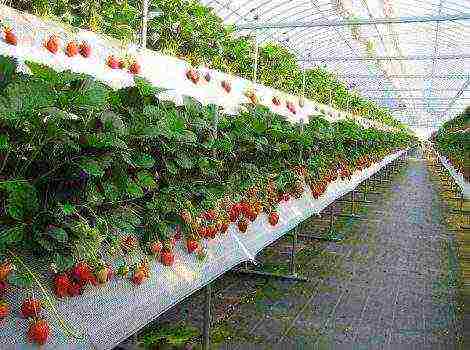Content [show]
Fragrant red strawberries can be called a real symbol of the coming summer, because at other times of the year it is unlikely that there will be an opportunity to feast on the berries of local crops. And yet there is a technology that allows you to harvest all year round, even in conditions far from ideal.
The essence of Dutch technology
Breeding strawberries in the Dutch way provides a stable profit, because the crop can be harvested all year round.

When growing strawberries using Dutch technology, the berries do not touch the ground.
The essence of the method can be reduced to several main points:
- Indoor cultivation... Strawberry bushes are planted in containers, boxes, pallets, while the fruits do not come into contact with the soil, which means they avoid the development of many diseases and retain their presentation for a long time.
- Regular planting of seedlings (about once every 1.5–2 months, after successful fruiting). Such measures ensure continuous productivity.
- Creation of special conditions for the growth and development of culture (equipment, lighting).
- Regular feeding of strawberries.
Advantages
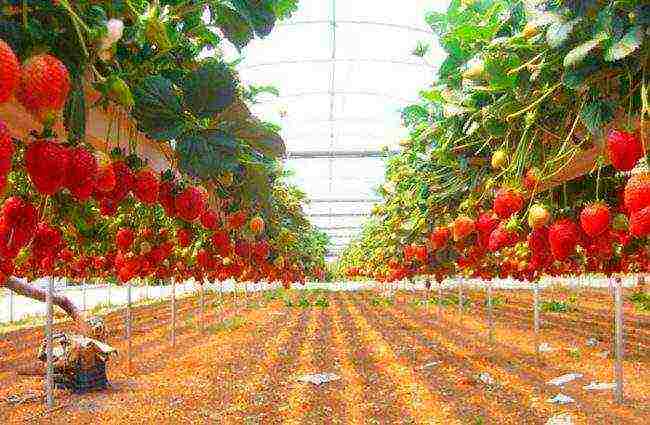
Harvested every 1.5-2 months.
The advantages of this growing method are obvious:
- stable harvest;
- absence of diseases and injuries caused by pests;
- attractive presentation of berries;
- excellent taste;
- profitable use of minimal areas;
- return on investment.
Maximum use of the usable area is achieved by vertical transplanting... For an even more efficient organization of the process, the best varieties are selected, the planting material is grown independently, an optimal microclimate is created.
Varieties for cultivation
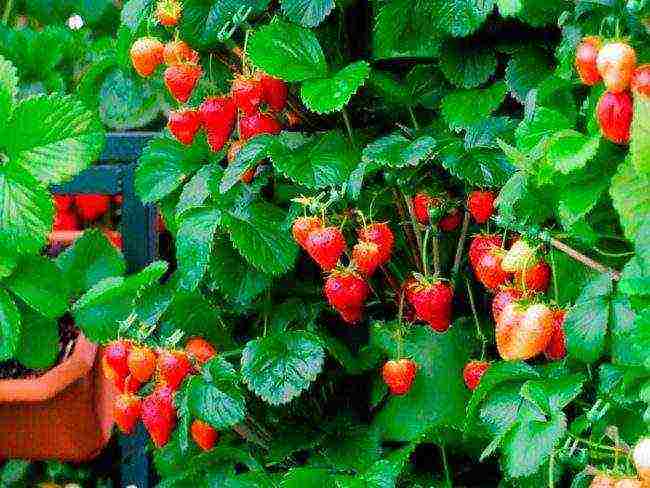
Self-pollinating strawberry varieties are needed for cultivation using Dutch technology.
The best varieties for growing in the Dutch way are:
- Darkness.
- Baron.
- Selva.
- Maria.
- Tribute.
- Polka.
- Sonata.
- Marmalade.
Difficulties
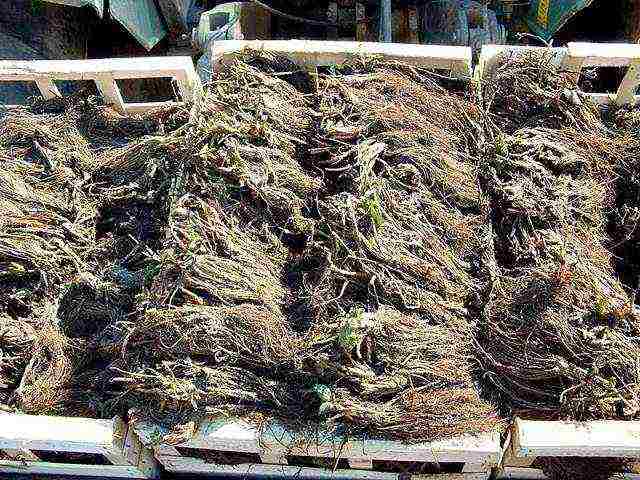
For commercial cultivation of strawberries, you will have to purchase ready-made Frigo seedlings in large quantities.
Challenges that farmers may face:
- constant provision of planting material;
- lighting and microclimate.
On a small-scale farm, it is more profitable to grow planting material on your own. If we are talking about an industrial scale of agricultural holdings, then it is more expedient to buy seedlings in large wholesale lots.
Necessary equipment
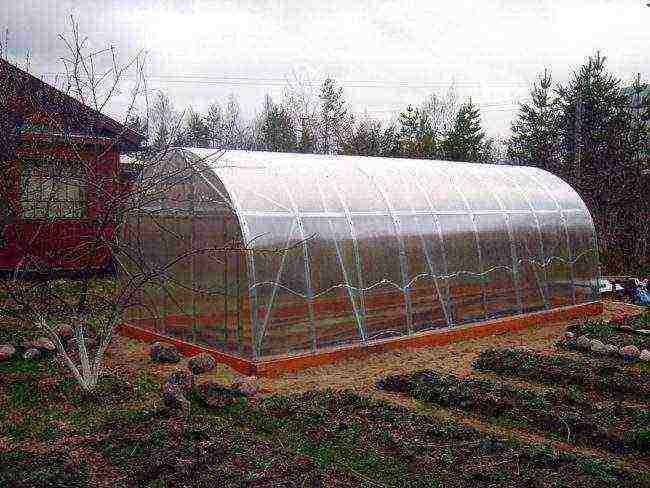
A greenhouse is needed to grow strawberries year-round.
Speaking about the necessary equipment, a novice agrarian will need:
- a place to install a greenhouse;
- containers for seedlings and containers for growing crops;
- irrigation system;
- good lighting.
Lighting
For a stable harvest, it is necessary that daylight hours last at least 12-16 hours. In the summer, you can save a lot by using natural light, but the rest of the time you will have to shell out significant sums for electricity consumption.
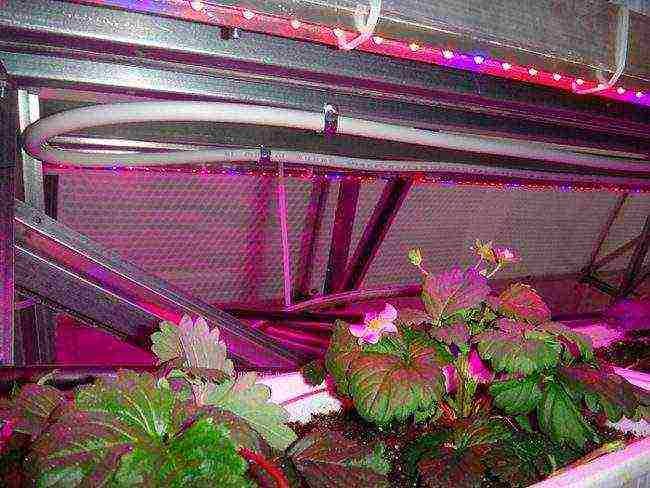
LED lighting for strawberries.
Some experts insist on using in greenhouses special phytolamps, however, it is also acceptable to use conventional and energy saving varieties. Standard filament fixtures add a significant increase in lighting costs.
The range of lighting fixtures should be close to sunlight, then after 10 days it will be possible to observe flowering, and after 35-37 days - fruiting varietal strawberries.
Drip system
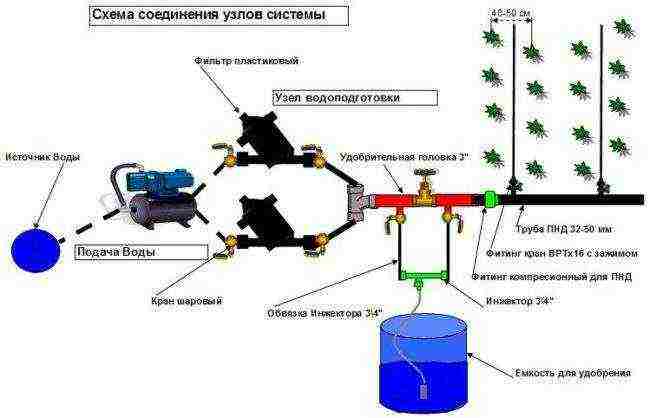
Installation diagram of drip irrigation.
The drip irrigation system has many advantages:
- localization of water supply;
- reduction of evaporation losses;
- elimination of water losses;
- weed reduction;
- maintaining air-water balance;
- simultaneous feeding;
- process automation;
- the ability to use in any soil and topography;
- use in windy weather;
- low energy consumption;
- reducing the level of fungal diseases and infections.
The flow of moisture directly to the root system of the plant does not allow the soil to swamp or dry out. Water does not hit the leaves and does not cause sunburn. The optimal level of watering is 3-5 drops per minute.
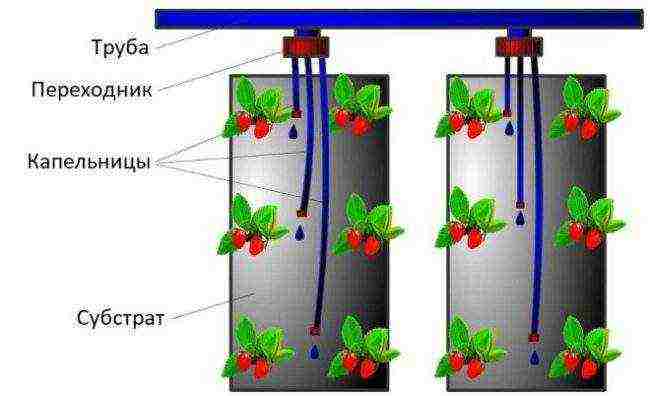
Scheme of supplying droppers with a vertical method of growing strawberries.
Equipment for installing a drip irrigation system can be purchased in specialized stores, or you can assemble it yourself using the simplest materials at hand.
Planting strawberries
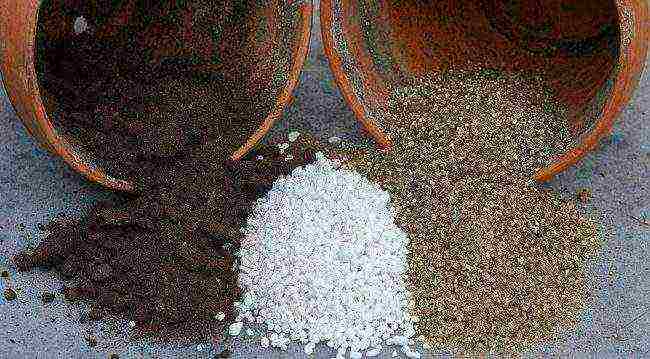
Strawberries are planted in a specially prepared substrate, the main components of which are perlite and cleaned soil.
Dutch technology requires special soil.
- To obtain it, purified soil in a low degree of acidity is mixed with river sand, compost, ash, sawdust and urea.
- But the main "secret" element of the mixture is perlite - a rock of volcanic origin.
In a summer cottage, you can take loamy sod soil as a basis. Ash is often replaced with chalk or dolomite flour. But organic matter is also used: manure, humus. As for the amount of river sand, its volume should not exceed 10% of the total mixture.
Before planting seedlings, the soil is well mixed, all foreign inclusions are removed, the soil is saturated with oxygen and nitrogen.
Seating is carried out in a checkerboard pattern at a distance of 25-30 cm from each other... Finished seedlings first "rest" by increasing their temperature to the air temperature of the greenhouse, as the planting material is stored in a cool, dark place.
Tips
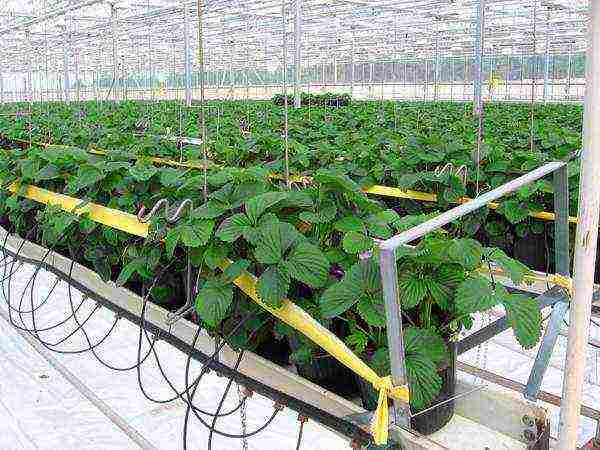
Strawberries in separate pots.
- Do not reduce the distance between landings., wanting to save money and plant as many bushes as possible. This will affect the size and taste of the berries.
- In the absence of self-pollinated varieties in the greenhouse, it is required to install a hive or pollinate yourself with a brush and fans.
- The main thing to remember is temperature and watering.... After the first fruiting, the plant is replaced with a new one. The "old man" is used to obtain seedlings by rooting a whisker. The carbon dioxide level can be adjusted by lighting the candles regularly.
Containers for planting
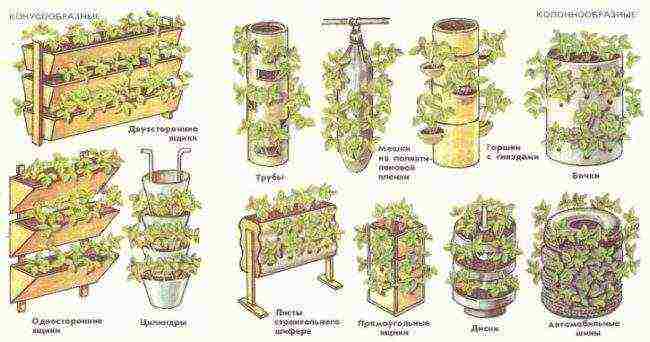
Homemade strawberry container options.
A little about containers for planting seedlings. The latter can be used containers, boxes, polypropylene pipes with special holes, plastic bags... The main thing to consider is the distance between the bushes, which is sufficient for the normal development of the root system.
Strawberries in horizontal PVC pipes.
Vertical beds of strawberries.
Plants must be well ventilated... This will allow them to resist various putrefactive infections, and will also have a positive effect on the tasting properties of the berries.
Microclimate
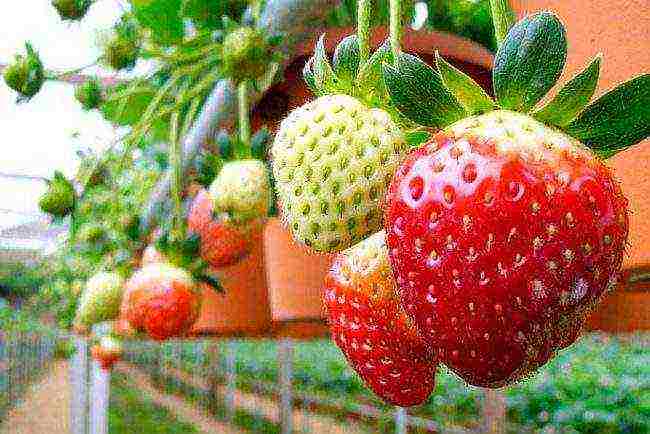
In the greenhouse, it is necessary to maintain a certain temperature regime.
According to Dutch technology, the optimal microclimate ranges from +18 ° C to +25 ° C... However, during the period of mass flowering, the air temperature should be kept at around +21 ° C.
Low temperatures cause a prolonged flowering period, high temperatures cause low pollination and ovary formation.
Air humidity
Air humidity is 70–80%.
With a lack of moisture, spraying is carried out, with an excess - ventilation. Excessive moisture can lead to the development of fungal infections, which is why it is so important to monitor these indicators. To accelerate the growth of seedlings, you can increase the% of carbon dioxide.
conclusions
In fact, Dutch strawberry cultivation technology is not as complicated as it seems at first glance. Most of the nuances of cultivation are taken into account when breeding crops in open field conditions. The main advantage of this method is high yields all year round. If all the requirements of agricultural technology are met, up to 50 kg of juicy sweet berries can be obtained from one square meter of the greenhouse, and this is already a month after planting.
Video on how to make drip irrigation
Dutch strawberry cultivation technology allows you to harvest all year round. This is a profitable idea for a small business, but recently it has also attracted the interest of those who grow strawberries in their personal plots. It is important to consider all the details of the process.
Method of growing berries in a greenhouse all year round: the essence of the method
From the name it is clear that this method was invented and used in Holland.
This technology creates a certain microclimate in the greenhouse, which minimizes losses from plant death and disease. Seedlings are also planted all year round.
The main difference from the standard breeding method is that the plant is used once, after fruiting it is replaced by another. As a result, the owner of the greenhouse has a constant harvest and no losses from dead plants.
Seedlings must be planted constantly, this is the only way to ensure a continuous harvest. To grow all-season strawberries in greenhouses, you will need specialized equipment.
When choosing a variety, it is desirable dwell on self-pollinating repair varieties. Primary seedlings can be purchased in special stores, the subsequent one can be grown from a mustache. Seedlings are also grown from seeds, but this is a more laborious process.
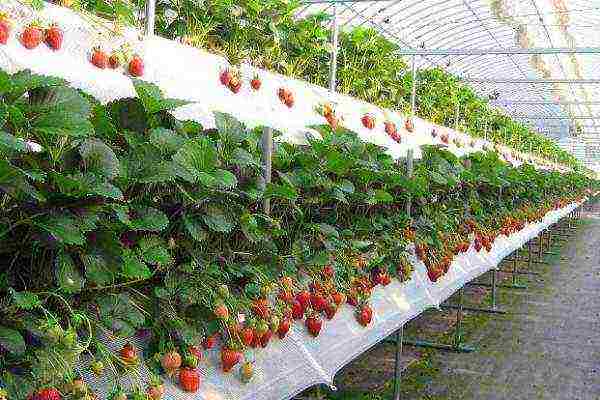 The method was invented and used in Holland, seedlings are planted all year round
The method was invented and used in Holland, seedlings are planted all year round
One of the features of the method is lack of contact of fruits with the ground... Therefore, they do not deteriorate and do not get sick.
To save space, use a vertical landing. This helps to efficiently use small areas for maximum profit.
The varieties have advantages: Selva, Maria, Baron, Darkness, Tribute, etc.
Beyond the obvious advantages in technology there are also difficulties:
- Providing a constant flow of planting material. Seedlings should be all year round. It is profitable to grow it for small volumes of production, and to buy it on an industrial scale.
- Indoor lighting and climate. Daylight hours are artificially extended, and the temperature must be constantly comfortable.
Breeding strawberries using Dutch technology step by step
First you need equipment:
- Container for growing strawberries... These can be plastic containers or ordinary flower pots. Special polyethylene bags with holes or propylene pipes are also suitable. At home, you can do it yourself. In the room, the boxes can be arranged in several tiers, the main thing is that everyone has enough light.
- Irrigation system... The most commonly used drip irrigation and devices to provide humidity in the room.
- Lighting... The choice of artificial light must be approached carefully, this is the basis of success. It can be daylight or professional lamps.
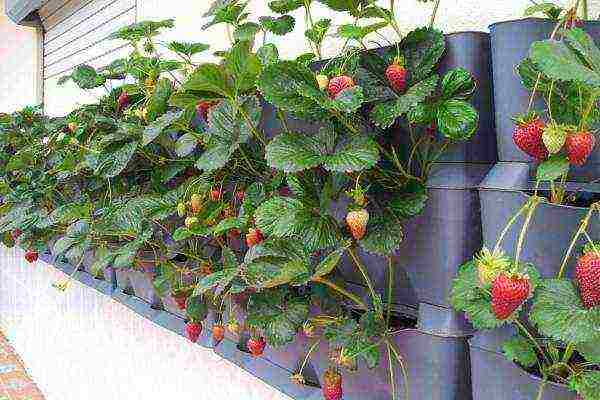 Necessary equipment: container for planting, irrigation and lighting system
Necessary equipment: container for planting, irrigation and lighting system
Lighting
For a regular harvest daylight hours are desirable to extend to 12-16 hours... In the summer there will be enough natural light, and in other seasons you will have to use artificial lighting.
Fitolamps are installed in the greenhouse, or, as a more budgetary option, ordinary, energy-saving ones.
Standard filament bulbs are sometimes used, but they are very expensive in terms of electricity bill.
Watering
For greenhouse irrigation watering is used, in which moisture does not fall on the ground parts of the plant... Consequently, they do not get sick, and water consumption is saved.
The greenhouse is installed drip irrigation system... The equipment can be purchased from specialized stores.
For a small production or for a home garden, you can use plastic bottles in which there are straws.
When adjusting irrigation, achieve a flow rate of 3-4 drops per minute. In this way, a sufficient humidity level can be achieved.
 Watering requires drip, you can use plastic bottles with straws
Watering requires drip, you can use plastic bottles with straws
Seedling soil
Simple land is not suitable for such a growing technique. For the manufacture of the substrate, you will need perlite Is a rock. It is mixed with peat.
The soil is cleaned soil, preferably loamy and with a low degree of acidity, with an admixture of river sand and compost. Plus a glass of ash and sawdust with urea.
Microclimate creation
The efficiency of the process depends on the overall climate that is created in the greenhouse. Ideal temperature for growth and fruiting - 18-25 degrees.
At temperatures below 12, growth slows down and the formation of berries stops. Excessive heat is also not welcome.
To prevent fungus from forming on the ground, the air humidity should be monitored and, if possible, ventilated the greenhouse. Spray regularly.
Air humidity is maintained in the region of 70-80%... To maintain the desired moisture level, it is practical to use reservoirs with water, placed in different corners of the greenhouse.
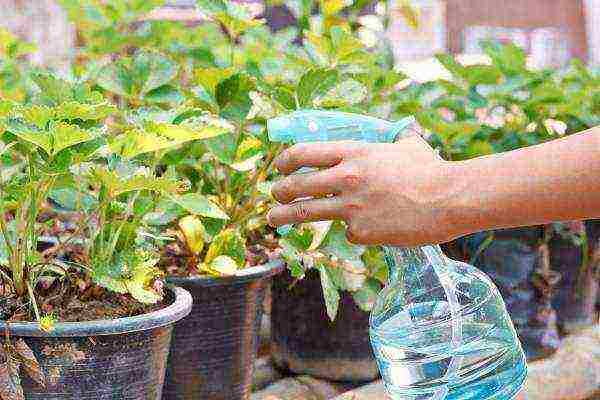 Control humidity, spray, ventilate the greenhouse
Control humidity, spray, ventilate the greenhouse
Planting and leaving
Staggered strawberries... The distance between the plants is about 25 cm. If ready-made chilled seedlings are used in production, they must first be brought into a warm room.
Strawberries are planted at a slight angle... The distance between the bushes cannot be reduced, since the berry will turn out to be small with frequent planting.
If the varieties do not self-pollinate, a pair of beehives should be installed in the room where it grows. If this is a home production, pollination can be done by yourself using, for example, fans, blowers or a brush.
Plant care is not difficult. All that is required to maintain the humidity of the air and soil at the desired level. Monitor the temperature.
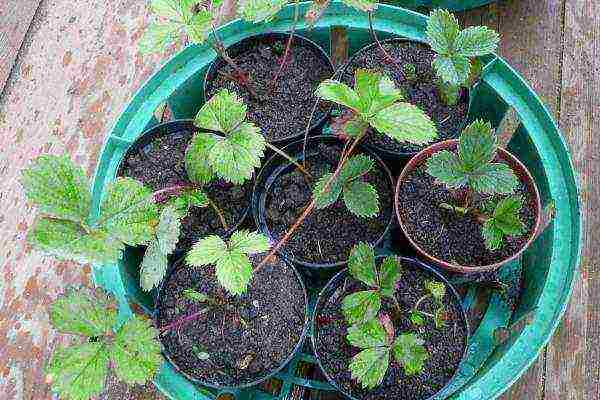 Strawberries are planted in a checkerboard pattern, at a slight angle
Strawberries are planted in a checkerboard pattern, at a slight angle
After harvest you can use the plant to get seedlings. To do this, the resulting mustache is rooted.
After that, the mustache is carefully removed. Then they are sorted by the number of peduncles and strength. And then they are sent for storage at a temperature of 0-2 degrees.
For constant photosynthesis need to maintain carbon dioxide levels... This is done by lighting candles.
Growing strawberries using the Dutch method is very effective and helps you get a harvest in just a month.
With proper care and adherence to all the nuances up to 50 kg of berries can be harvested from one square meter of the greenhouse.
Not so long ago, the year-round cultivation of strawberries in Russia was the dream of gardeners and summer residents. Today this desire is quite simple to realize - it is enough to master the cultivation of berries according to the Dutch technology.When using this technique, you can grow tasty and healthy berries for yourself and for sale at any time of the year.
Dutch strawberry technology
The principle of the Dutch technique
The main principle of the technology is to plant strawberry bushes in a container with soil, which can be used for:
- boxes;
- special bags;
- flower pots;
- pallets.
Strawberry cultivation methods
The choice of a specific place for growing strawberries depends on the goals of the gardener - the larger the crop you want to get, the more spacious the place should be for growing.
Dutch method of growing strawberries
This technique involves the artificial awakening of plants in order to obtain the maximum yield by simulating certain conditions. In order for the strawberry bushes to receive all the substances necessary for nutrition and early fruiting, a special solution is used, supplied to the seedlings by drip.
The picture shows the cultivation of strawberries in bags
According to the Dutch technique, it is allowed to place the crops grown vertically and on horizontal surfaces - the choice depends solely on the space available to the gardener and the desire. For regular harvesting, strawberries must be provided with the proper level of lighting, which is achieved by installing lighting fixtures. Year-round harvesting depends on the timeliness of planting new seedlings - the average time interval between plantings is two months.
To get a good harvest, it is important to renew the seedlings on time.
Planting material
Conditions
To achieve maximum yield, it is required to create certain conditions for plants:
- install fluorescent lamps - for early ripening, strawberries need to be exposed to light for 15-18 hours daily, for an area of 6 square meters, one light bulb of 50-60 W is enough;
Lighting for strawberries
- ensure stable and regular watering - a drip system is most often used;
- the humidity in the room should be maintained at 72-80%, which is achieved by regularly spraying the plants, but the procedures should be stopped during flowering - moisture droplets have a negative effect on flowers and contribute to the development of diseases;
Growing strawberries
- so that the number of ripening berries does not decrease, it is required to regularly ventilate the room where strawberries are grown, or you can install a ventilation system (this is important for the industrial cultivation of berries) - the carbon dioxide content in the room is monitored by specially installed sensors;
- the optimal temperature regime, regardless of the time of day, should be within 18-21 degrees before flowering and up to 28 degrees from the moment the flowers appear;
Growing strawberries using Dutch technology
- seedlings are planted in portions, observing a uniform time interval between plantings;
- if necessary, pollination is carried out.
The advantages of the technique
The Dutch method of growing strawberries has fallen in love with gardeners for a number of inherent advantages:
- seedlings can be placed in any convenient container, suitable in size and parameters;
- when grown in a transparent greenhouse, you can save on energy costs by providing plants with natural light;
- you can even grow strawberries at home;
- the taste and appearance of berries are not inferior to the characteristics of fruits grown in the open field;
- low probability of infection of berries with bacteria and diseases due to the possibility of processing planting containers;
- the method is convenient and simple;
- the harvest is harvested every 1.5-2 months, which allows you to receive regular profit from the sale of berries.
Suitable varieties for growing
A gardener who decides to grow berries using Dutch technology needs to decide on the varieties of strawberries that bring the greatest yield.Remontant varieties are optimal for this growing method, which give an equally high yield level when planted both in open and closed ground.
Since plants grown according to Dutch technology are not naturally pollinated, it is advisable to select self-pollinating varieties - otherwise the gardener will have to take the function of the pollinator on the seed, which can be very problematic when growing berries in large quantities over a wide area.
Strawberry growing rules
Preparation of strawberry bushes according to Dutch technology
Since the seedlings need to be replaced every 2 months, you should decide on the options for obtaining it. So, seedlings can be:
- buy in gardening stores, but the costs will be quite high;
- grow it yourself using rosettes and tendrils of mother plants.
Strawberry seedlings on the window
To grow seedlings at home, special skills are not required, it is enough:
- cut off peduncles and mustaches from the uterine bushes, next year 16-19 mustaches will grow on these bushes, which will need to be rooted;
- after rooting, it is necessary to allow the plants to develop, and in the fall - to dig them up and place in a cool place, providing natural rest;
- the plant is stored at a temperature of -2 degrees (for example, in the refrigerator);
- if necessary, the plant can be "woken up" at any time - the seedling is taken out of the coolness and left warm for a day, after which it is planted.
Propagation of strawberries with a mustache
Seedling classes differ in the diameter of the strawberry root system
Planting soil
For planting plants, you should not use old manure or sandy soil containing old manure, since this composition of the substrate contributes to the defeat of plants by diseases and parasites. For cultivation of strawberries, disinfected soil must be used that does not contain microbes and weed plants.
Soil preparation
For planting mother bushes, the soil is prepared in October - organic fertilizers, lime, potassium chloride and superphosphate are introduced into it. With the onset of spring, plants are planted in the soil, while maintaining a 40-centimeter distance between the rows.
The optimal soil for the container are:
- perlite;
- peat;
- coconut fiber.
After filling the containers with soil, the seedlings are planted according to a checkerboard pattern of 25 x 30 centimeters. If this distance is reduced, the plants will experience a lack of nutrition and there is a great risk of getting small berries.
Growing strawberries in a greenhouse all year round
An excellent option for planting containers is considered to be small plastic bags, up to 15 centimeters in diameter. Such containers are filled with soil, then holes are cut into them at a distance of 25 cm from each other and strawberry bushes are planted at a 40 ° slope. This planting option is practical - you can even place plastic containers on a balcony or window sills in several rows, which will significantly increase yields.
Video - How strawberries are grown in Holland
Strawberry bushes care
Plant care consists in stable and full watering, which should be organized so that liquid does not get on the berries and leaves. To fulfill this condition, an irrigation system is constructed from pipes connected in a certain way to the root systems of plants - it will greatly simplify the process of caring for plants and provide high-quality and rational soil moisture.
Such irrigation systems are easily made from a drip, one end of which is lowered into a suspended bottle filled with water, and the other end is supplied to the roots of each of the strawberry bushes. As the liquid flows out, the bottle is refilled with water.
Drip irrigation
The Dutch system of year-round, continuous cultivation of strawberries in containers, indoors, does not differ in complexity and does not require impressive financial costs or training in special skills from the gardener.All that is needed to obtain a harvest is to create the best conditions for flowering, growing and ripening berries on strawberry bushes. If the strawberries receive enough water and light, are planted in high-quality and disinfected soil, are regularly updated, then the berry harvest will exceed any expectations in quality and quantity.
Growing strawberries all year round using Dutch technology
Video - Vertical method of growing strawberries

Table of contents:
- How to grow strawberries using the Dutch method?
- Planting care is the key to a good harvest
- Where to get seedlings?
The strawberry harvesting season is very short - only 2-3 weeks. So the housewives are trying to collect and prepare as many sweet fragrant berries as possible, cook jam and compotes, dry, freeze. It is a little easier for those who grow remontant varieties: they bear fruit 2 times per summer. But late harvests in northern regions are often frozen, which can lead to a significant loss of harvest. The solution to the problem is the Dutch method. European farmers have long been cultivating garden strawberries in greenhouses, which makes it possible to avoid many of the risks that are usual for growing them on plantations.
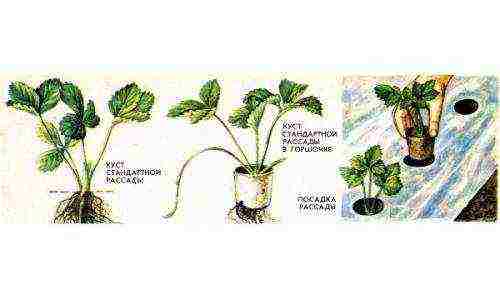
Figure 1. Scheme of planting strawberries in bags.
The largest producer of berries in Europe is rightfully considered the Netherlands (Holland).
Growing strawberries using Dutch technology in greenhouses has a number of advantages:
- the availability of the method for an ordinary summer resident;
- the opportunity to receive crops all year round;
- there is no contact of berries with the soil, which entails a high safety of the crop, the absence of diseases and pests;
- the possibility of placing landings on the balcony or in the room due to their small area;
- minimum investment for growing.
How to grow strawberries using the Dutch method?
You can get the first berries at the beginning of winter if you plant seedlings at the end of summer, in August. Sockets are planted in plastic bags filled with a substrate or in various plastic containers, the depth of which is at least 25-30 cm.
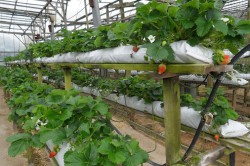
Figure 2. Bags of strawberries should be placed on one or two tiers, not forgetting about abundant lighting.
- You can make bags for growing strawberries yourself. To do this, a rectangle 51 cm wide is cut out of dense polyethylene, its length will depend on the owner's desire. The film is folded in half lengthwise, sealed or stitched with a side seam. The result is a sleeve with a diameter of about 16 cm. A specially prepared mixture is poured into the bag.
- The substrate mix consists of steamed peat mixed with perlite in a 2: 1 ratio. The peculiarity of this material is that it can absorb moisture in an amount of up to 400% of its volume, gradually releasing it if necessary. This ensures an even flow of moisture to the roots.
- For planting strawberry rosettes in a bag, holes are cut in 2 rows:
- at a distance of 25 cm from each other, if the holes in adjacent rows are staggered;
- at a distance of 40 cm if they are located in pairs.
Remove excess leaves from strawberry bushes, leaving 3 leaves. The root is pinched a little and the rosette is placed in the cut hole so that the central part of it, the "heart" or growth point, is located at the level of the soil. Rice. one.
The bags are placed on the greenhouse racks so that a distance of at least 50 cm remains between them. The height of the rack should correspond to the height of the person caring for the strawberries. Seedling bags can be placed in 1-2 tiers, making sure to provide enough light for each bush. Rice. 2.
The Dutch method of growing strawberries involves placing seedlings in bags both horizontally and vertically. With the vertical arrangement of bags, space for their placement is significantly saved. Plants can also be planted vertically on the side of the sleeve that is at the bottom in a horizontal position, but the conditions of natural light for the plants will not be the same. Therefore, it is necessary to provide for the possibility of artificial illumination with fluorescent lamps or turn the vertical bag several times a day so that the sun illuminates all its sides.
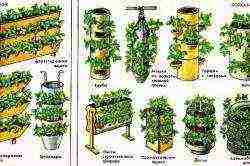
Figure 3. Variants of placement of vertical plantings of strawberries.
For vertical cultivation of strawberries, plastic or metal pipes with a diameter of 16-20 cm can be used.Preparation of the pipe is carried out as follows:
- holes with a diameter of 5-7 cm are cut out in opposite sides of it, each next row of holes is placed in a perpendicular direction to the previous one. The distance between the rows is 25 cm. Fig. 3;
- the pipe is filled with soil, a strawberry rosette is planted in each hole. To prevent the soil from spilling out of the holes, you can place a bent disc made of plastic or tin into the lower part of them, forming a platform located at an angle of 45 °;
- the pipe is installed and securely fixed in an upright position.
In each pipe 2 m long, about 20 plants can be placed, which, with good care, will yield 5-8 kg of marketable berries.
Back to the table of contents
Planting care is the key to a good harvest
In order for strawberries cultivated according to Dutch technology to please the owner with a harvest of berries, it is necessary to provide it with the conditions in which it bears fruit best in the garden:
- constant temperature 18-25 ° С;
- optimum air humidity 70-80%;
- daylight hours lasting 15-18 hours;
- keeping the soil moist;
- pollination of flowers in the absence of insects.
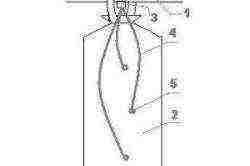
Figure 4. Drip irrigation scheme: 1 - pipeline, 2 - bag, 3 - nozzle, 4 - tubes, 5 - hole.
- In the room where strawberries grow, it is recommended to maintain the temperature according to the following scheme: before flowering not higher than 21 ° С, during flowering maximum 25, at ripening 20-25 ° С. In large greenhouses, to ensure the desired temperature regime, automatic thermostats are used, which turn off the heating if necessary. At home or in a greenhouse at a summer cottage, regular ventilation will help to reduce the temperature.
- Air humidity is maintained by spraying small crops from a spray bottle or by placing open containers of water in the greenhouse. Blooming strawberries should not be sprayed.
- The required length of daylight hours is achieved by artificial illumination. Ordinary fluorescent lamps will work, but it is better to purchase special lamps for the illumination.
- Watering is carried out by the drip method, by means of droppers drawn into each hole from the common pipeline. Rice. 4. Drip irrigation at home is provided by hanging a plastic bottle over the bag, into which the tubes are inserted. The drop rate is 3-4 drops per minute. Ready-made strawberry fertilizers are dissolved in water for irrigation.
- Small amounts of pollination can be done with a soft watercolor brush, lightly transferring pollen from the edge to the middle of the flower. You can lightly shake each flower brush several times a day, dusting it with pollen.
Back to the table of contents
Where to get seedlings? 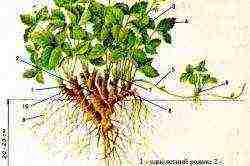
Diagram of the structure of the strawberry bush.
The most important secret of Dutch technology is frigo seedlings. For indoor soil, it is preferable to choose large-fruited remontant varieties: Elizabeth II, Khonei, Marshal, Albion, Gigantella, etc. They are capable of producing a crop 2 months after the previous one has been removed. This makes it possible to get 2 crops from each planting, after which the bushes are removed and new seedlings are planted. Used bushes can be stored until spring and planted in the ground for growing seedlings for the new season.
Seedlings "frigo" are rooted rosettes of remontant varieties, which are stored at a temperature of 0 ... -1 ° C, which is quite affordable at home in a refrigerator or cellar. For storage, seedlings are processed by removing shoots and large leaves. Shake off the soil from the roots, trying not to damage them. It is impossible to wash off the ground with water and cut long roots.
Prepared seedlings are sorted:
- class B has a root collar thickness of 8-12 mm, it can be used for growing and planting in a year;
- class A- - neck thickness 12-15 mm, in the year of planting it is capable of producing 10-20 marketable berries;
- class A + - 15-18 mm, yield 25-30 berries of standard size for the variety per year of planting;
- class WB - neck more than 22 mm thick, yield in the first year up to 450 g; you can get such seedlings by transplanting the first rosettes in a separate area at the end of June and growing them until autumn with the constant removal of all formed peduncles and whiskers.
After processing and sorting the seedlings, they are tied into bundles of 50-100 pieces and packed in plastic bags. Better to use perforated bags for air exchange. It is important to keep the humidity inside the bag at around 90%. In this form, seedlings can be stored from 2 weeks to 10 months. Plants of classes B and A- are best tolerated for long periods of storage. Large seedlings lose their yield with a long shelf life.
Before planting, the seedlings are warmed in opened bags for 1 day in a cool place with a temperature of about 15 ° C.
Planting seedlings at short intervals in time, you can get a permanent "conveyor" for the production of delicious products in the winter season. There is nothing difficult in growing strawberries, you just need to provide the plants with all the conditions necessary for good growth, and they will certainly respond to care, thanking the owner with fragrant berries.
